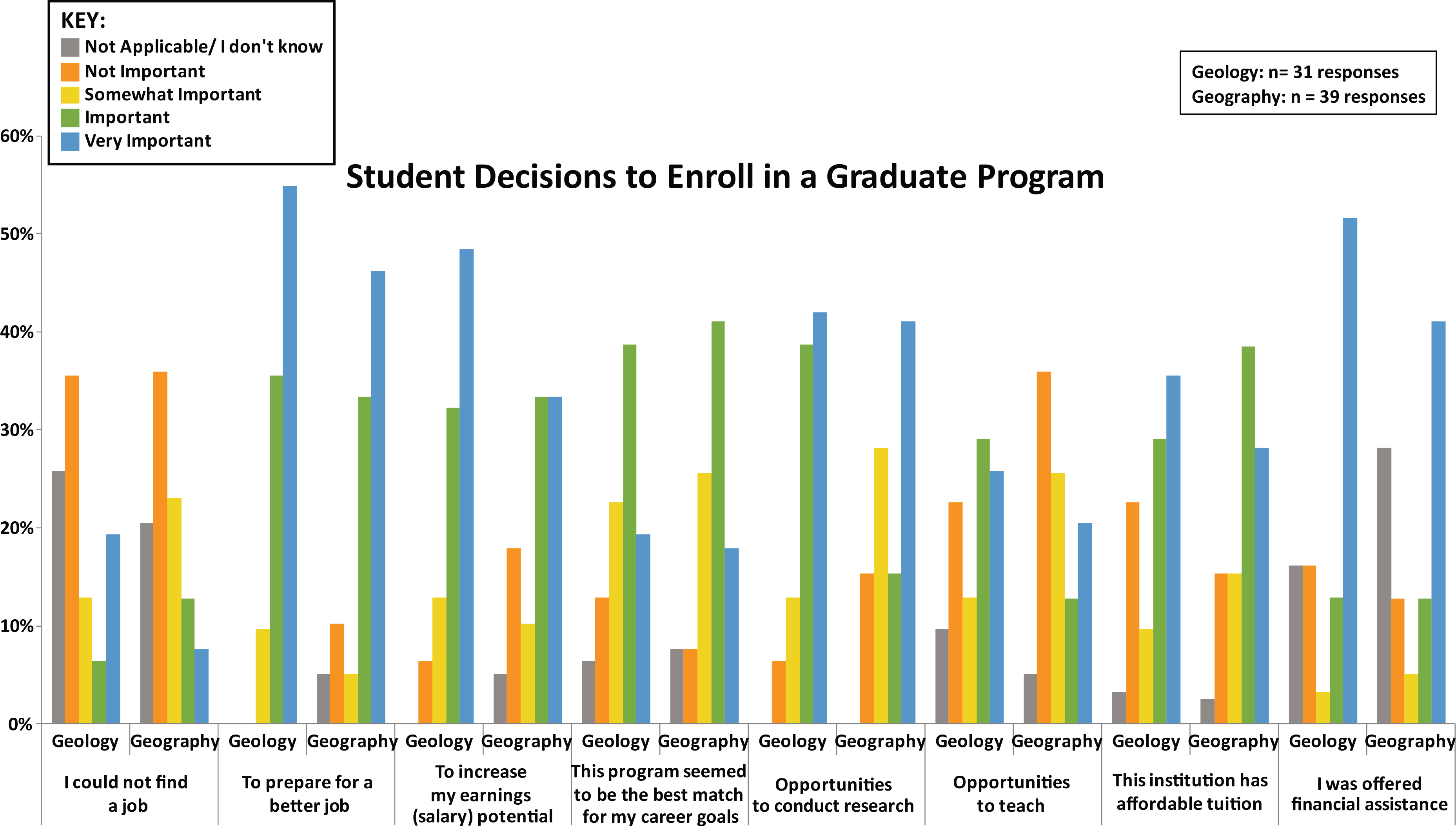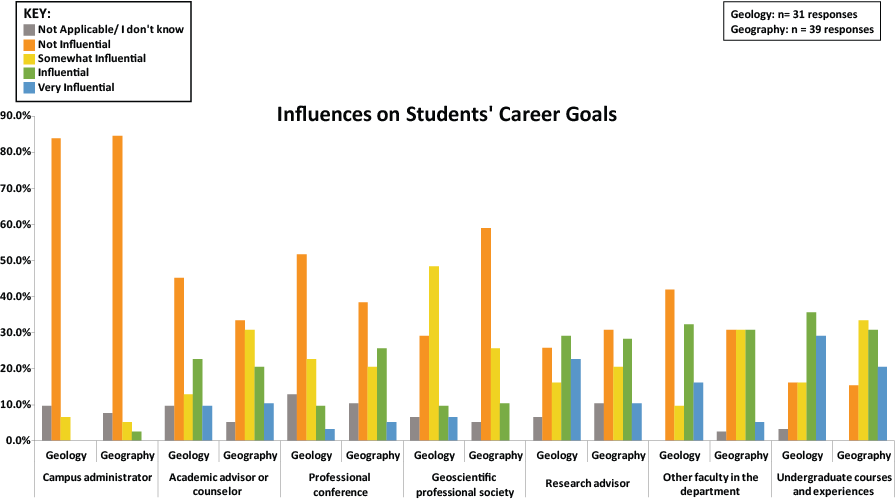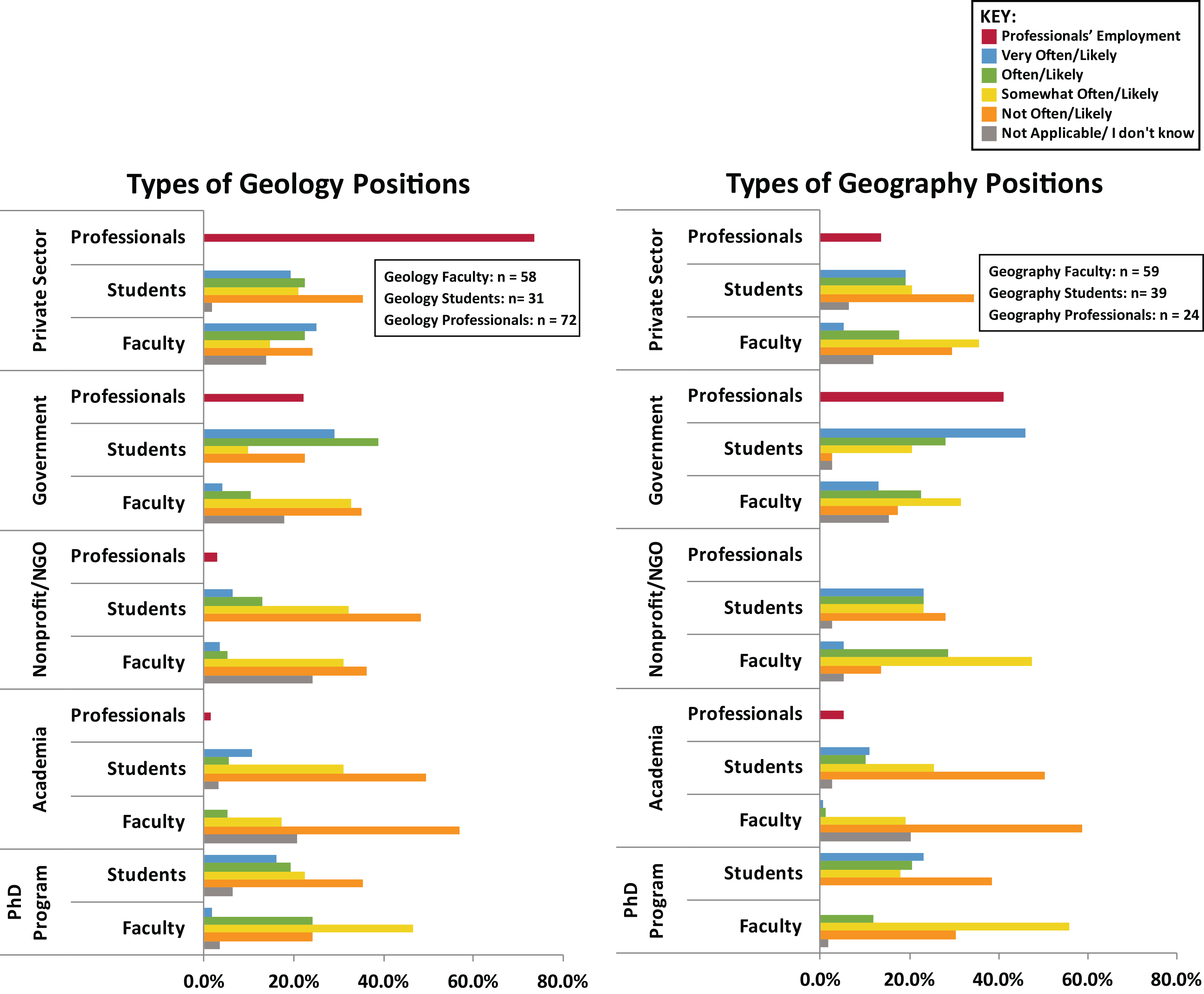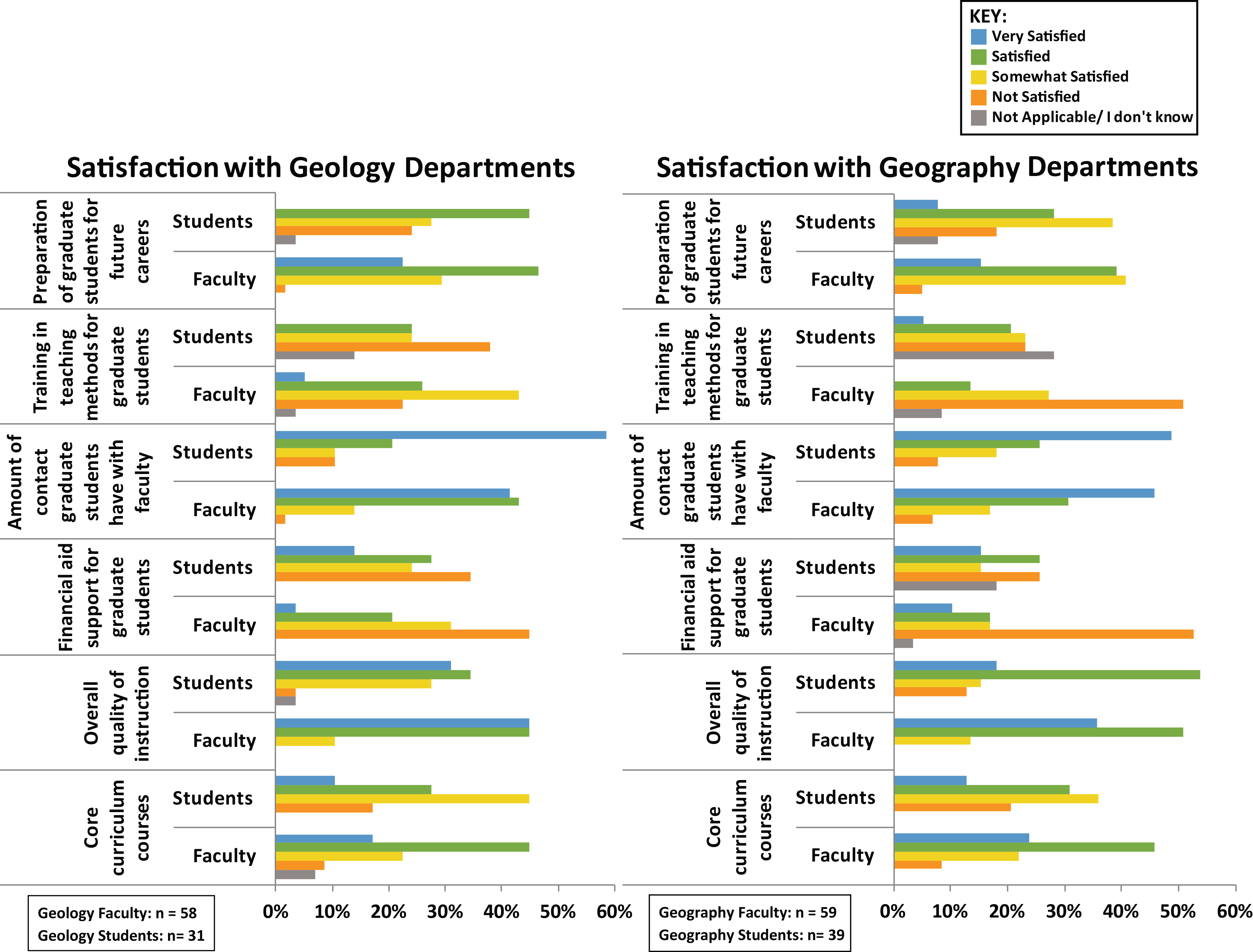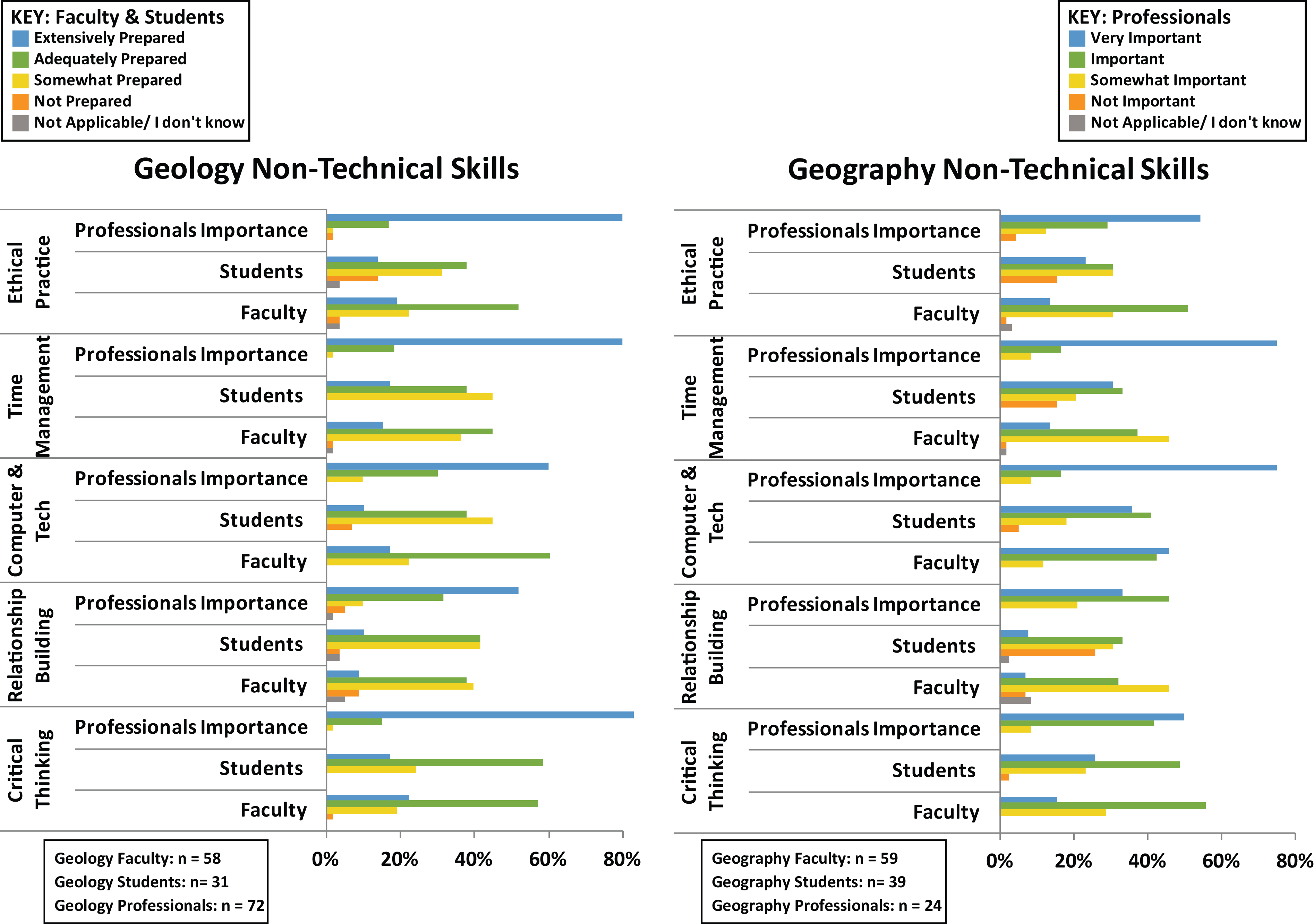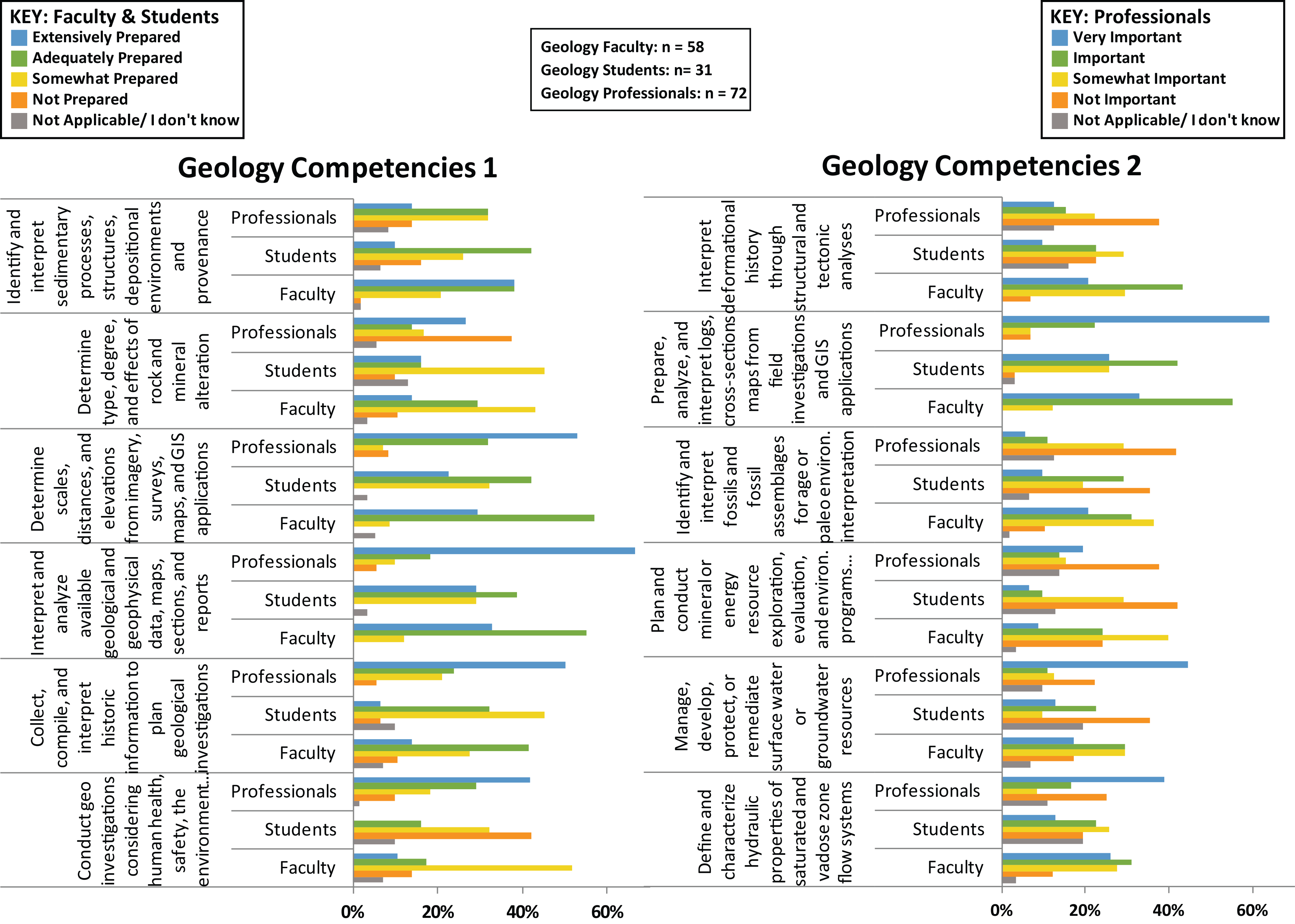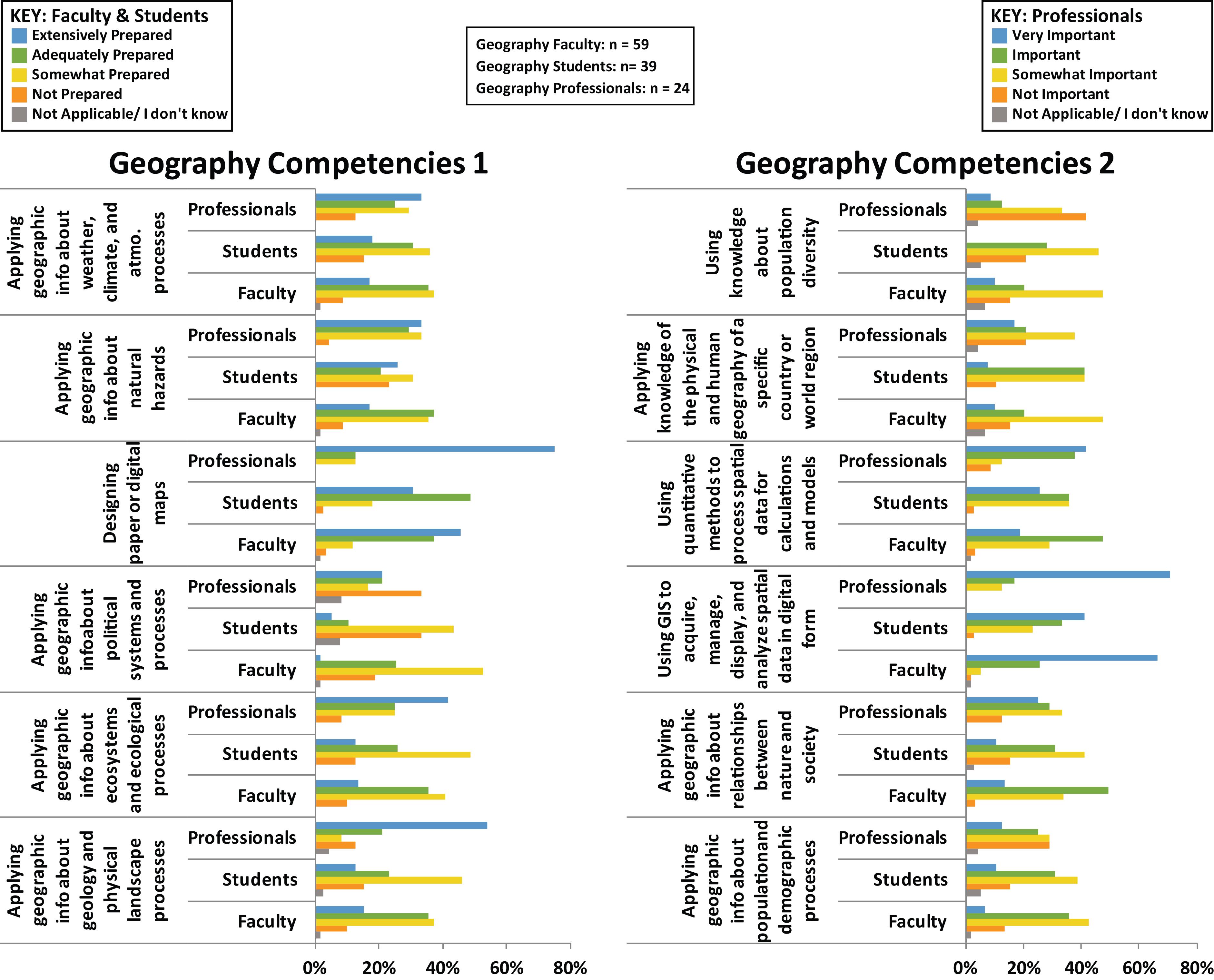Student Decisions to Enroll in a Graduate Program
The Geoscience Career Master's Preparation Survey asked students in Geology and Geography Master's departments, "How important were the following factors in your decision to enroll in your graduate program?" Out of the 23 factors asked of students, this graph highlights the trends of eight factors regarding employment, salary potential, career goals, extra opportunities and financial influences.

